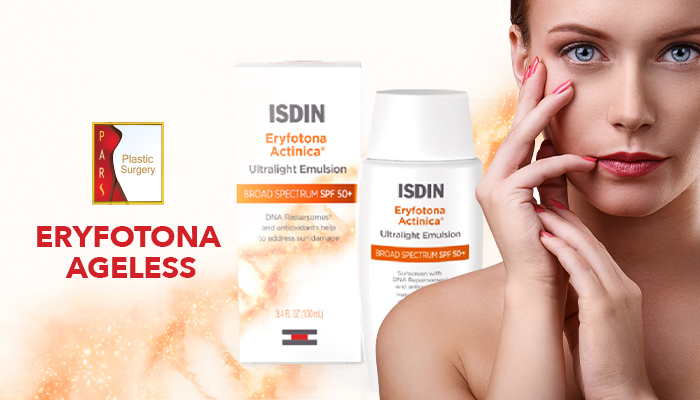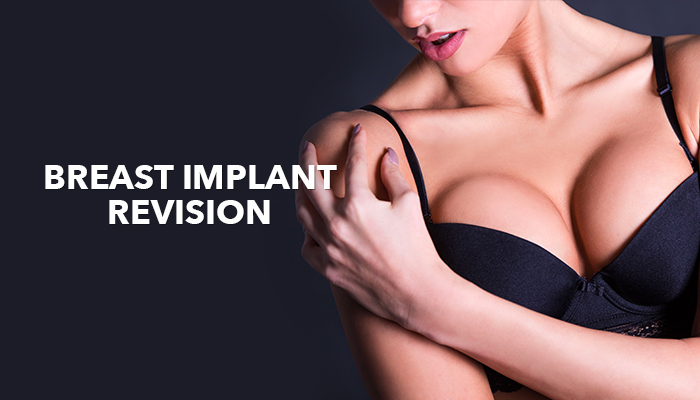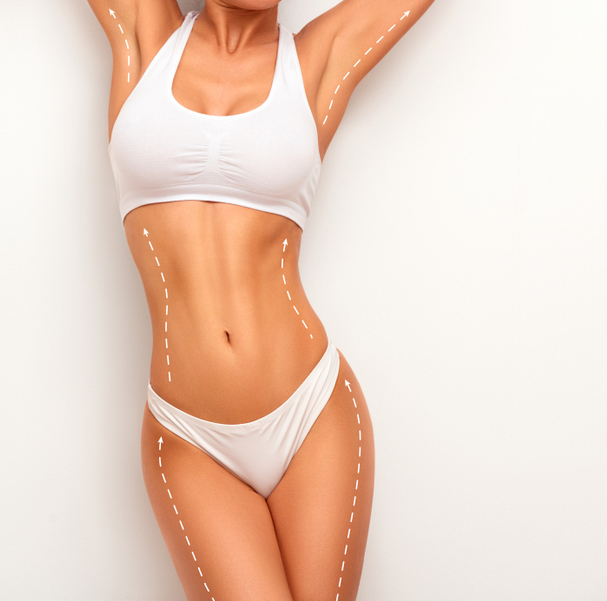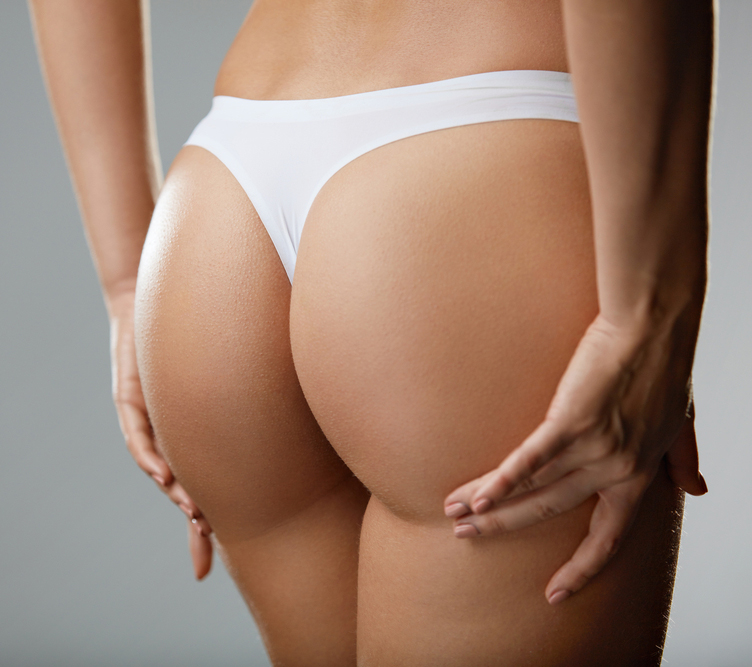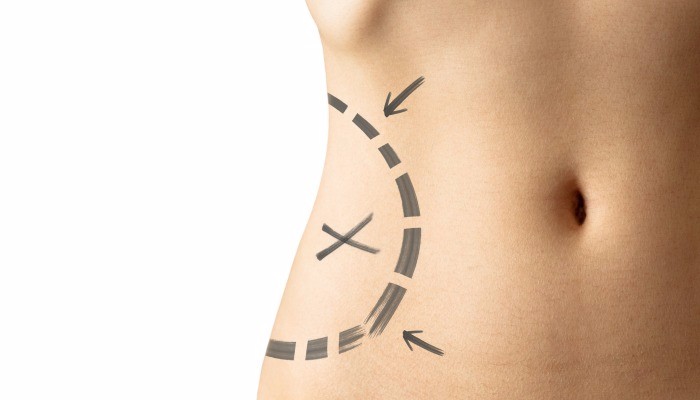
“Liposuction”, is a plastic surgery procedure commonly known as “lipoplasty”, “liposculpture”, “suction lipectomy” or “lipo”. It includes the extraction or permanent removal of subcutaneous fat using cosmetic surgery. This surgery can be done in almost any part of the body, but it is most commonly done in the abdomen, thighs, chin, upper arms, and back. The objective of this cosmetic surgery is to get a slimmer and better-proportioned figure. Moreover, it aims to get rid of those pockets of fat which refuse to respond to diet and exercise.
Liposuction pre-requisites:
- Contradictorily, the ideal surgical candidates are those patients who possess good health and are already in a good physical condition (less than 30% of overweight) with lipodystrophy-resistant areas which refuse to respond to either diet or exercise.
- However, this surgery is not a replacement for either proper exercise or a balanced diet. In fact, if the patient does not maintain a healthy lifestyle once the surgery is performed, there is a risk of the remaining fat cells getting bigger.
- Another requirement is that patients undergoing this surgery should have sagging or flabby skin.
- Likewise, they should be patients without a medical history of chronic diseases, including hypertension, blood diseases, and kidney diseases.
History of Liposuction:
Liposuction was initiated in 1926 when a French physician, Dr. Dujarier tried to remove fat tissues from a model’s body. However the results from this procedure weren’t quite pleasant and the patient ended up with gangrene in one of her legs.
Later, in 1974, two Italian-American surgeons “Doctor Giorgio” and “Arpad Fischer” came up with a modern liposuction procedure. This surgery started with a presentation in 1982 by Dr. Yves-Gerard Illouz, a French surgeon, whose technique of suction-assisted lipolysis included the use of fluids to help remove fat tissue through a special cannula and high-vacuum suction. Results from this technique were a tad better now.
However, the tumescent technique was invented by Drs. Jeffrey Alan Klein (USA) and Patrick Lillis (USA) in 1985. Near the end of the last century, ultrasound was introduced to assist the liposuction procedure, in order to liquefy the fat through ultrasonic energy.
In recent years laser-tipped probes have been introduced. Their advantage are over traditional techniques is yet to be determined.
In the last twenty years liposuction has become the most popular surgery in USA and United Kingdom. Half of the patients undergoing this surgery are aged between 19 and 50 years, and most are women. Over 400,000 procedures are carried out in the USA each year. The success of this procedure is due to development and innovation in all of its medical techniques. This surgery isn’t just aesthetic, fat can also be used today as a natural filler and some medical conditions can benefit from liposuction. Some of these are:
– Lipomas: (benign subcutaneous fatty growths)
Patients typically want them removed because they are unsightly or put pressure on nerves which causes discomfort.
– Gynecomastia:
Common endocrine disorder in which there is a benign enlargement of breast tissue in males.
– Lipodystrophy syndrome: A condition in which body fat is in an abnormal or degenerative condition. In other words fat accumulates in one part of the body while there is lack of fat in some other part of the body.
Liposuction may improve the patient’s body contours because it results in a better body fat distribution.
What should the patient do before a liposuction?
- The patient who wants to undergo this surgery should discuss the benefits and disadvantages of liposuction with his/her primary care physician.
- He/she should clearly convey their motivations and expectations.
- They should be well aware of what the procedure involves and what can be the possible outcomes.
- The patient may be asked to sign a consent form which confirms that he/she is aware of the risks involved, alternative methods, and possible complications.
- The doctor must show the patient an approximation of what would be the scope and likely outcome of the intervention. For this purpose, two identical pictures can be used, in different positions, one of those pictures will be modified in the outline of the body with a black marker and subsequently compared with the other one, thus obtaining a true estimate of the result. These pictures will also be compared to the pictures taken once the healing process is complete.
- Patients will need to undergo some health tests, in order to verify that their health is suitable for surgery.
- Also, the medical team will ask the patient to stop taking aspirin and other drugs that can alter blood at least two weeks before the surgery.
- If the patient is a woman, she ought to stop taking contraceptive pills for almost a month prior to the surgery.
- The patients should shower with povidone, iodine or chlorhexidine, from almost three days prior to the surgery.
What is the general procedure?
- The procedure can be performed under general anesthesia (the patient asleep) or local anesthesia (where the area is numbed and the patient remains awake) only when done on small areas.
- A liposuction surgery may last between 1 and 4 hours. This depends on the amount of fat that has to be removed.
- The plastic surgeon may mark lines over the patient’s body; these lines will indicate the specific places where the fat should be removed.
- A cannula or “narrow tube”, or a micro-cannula (a very small cannula, with less than 3mm of inner diameter) is introduced under the skin through a tiny incision and is used to vacuum out the fatty tissue beneath the skin.
- Patients may feel discomfort during the procedure while the surgeon moves the cannula under the skin, which is normal, but if the patient feels any pain, the patient should inform the doctor since it may imply that the medication or the technique needs to be changed.
- Large cannulas tend to create irregularities more commonly than micro cannulas.
- The cannula or micro cannula is attached to a special vacuum machine. It first loosens the skin and then sucks and extract the fats out of the patient’s body.
Liposuction techniques:
There are many different liposuction techniques which have been explained below:
– Tumescent liposuction: In this technique saline solution, lidocaine (a local anesthetic) and epinephrine or adrenaline (vessel-constrictor) are pumped subcutaneously into the liposuction area. This blend of fluids minimizes the risk of bleeding, bruising and the development of postoperative edema. However, the amount of liquid used during the procedure should be more than the amount of fat to be removed. This fluid helps create a space between the muscle and the fatty tissue, allowing more maneuverability for the cannula.
– Wet liposuction: A small amount of fluid (similar to the one used in tumescent liposuction) but less than the amount of fat that will be removed is injected into the target area.
-Super-Wet liposuction: This technique uses the same amount of liquid as fat to be removed. This technique is very similar to tumescent liposuction and the patient may need a separate anesthetic.
-Dry liposuction: No fluid is injected before fat is removed. There is a higher risk of bruising and bleeding, so this method is rarely used today.
– Ultrasound-assisted liposuction (UAL): The cannula is connected to an ultrasound system. This helps to melt the fat through contact. The ultrasound vibrations liquefy the fat, which makes it easier to be sucked out. This method is recommended when the patient desires to remove the fat from fibrous areas (male breast, back), or in those patients who have undergone liposuction previously. However, longer incisions in the skin are needed for this procedure, and there is a risk of skin injuries or internal burns. This procedure takes longer than the others, because it is often done alongside tumescent liposuction, so this technique is more expensive. This technique should be combined with suction-assisted liposuction in order to extract the remaining liquefied fat.
– Power assisted liposuction (PAS): This method is more technical. In this case, the plastic surgeon will use a mechanical cannula which doesn’t require the plastic surgeon to make a lot of movements. Consequently, the fat is removed easily. This technique is more comfortable for the doctor and is much more precise, especially in smaller areas. It may also be less painful for the patient.
– Laser-assisted lipolysis (LAL): During this method, the plastic surgeon inserts a micro cannula through a small incision which allows the application of laser energy over the fat tissue. This laser energy heats up the fat and eventually melts it. It requires the use of tumescent fluid and is a far less invasive and less bloody procedure than the traditional liposuction method.
The technique to be used should be discussed with and chosen by the patient in the initial consultation visit.
What is the post-operative care?
- Usually, the patient has a quick recovery.
- He/she goes home the same day generally.
- However, initially the movement is limited yet the patient’s activity levels may increase progressively.
- The total recovery depends on how extensive the surgery was, but post-operative care is decisive in reducing the recovery time.
- The patient cannot exercise or be exposed to the sun for at least three weeks after the surgery, and he/she can only return to work if it does not involve any physical effort.
- The patient cannot shower for the first three days following the surgery. He/She can only use a grooming sponge.
- He/she should use a support garment or elastic bands during this healing period.
- Some physicians recommend putting ice over this support garment, for almost ten minutes to avoid skin burns.
- Oral medications will be used for pain (analgesics or painkillers) as well as antibiotics immediately after surgery.
- The final results of the surgery begin to be noticed after the tenth day onwards when the inflammation has gone down, but in some cases, that inflammation completely disappears after several months.
- Patients who maintain their weight can usually expect permanent results. Those who gain weight after the procedure may find their fat distribution altered.
- Other important results that have been documented are the psychological benefits; this kind of surgeries may also increase the patients’ self-confidence since they will feel greater satisfaction with his/her appearance and body image.
- If the patient conveys his/her expectations and desires to the surgeon clearly, if the chosen surgeon is an experienced and qualified one, if proper precautions and most operative care is taken, then the results are generally pleasant.
Possible Complications:
Although, complications are rare, yet they can be these can be classified into the following categories:
– Cosmetic Complications:
Bruising (especially in patients with a tendency to bleed),
Inflammation (the swelling in some cases may take up to six months to settle and fluids may continue to ooze from the incisions),
Irregularities of body contouring (if the patient has poor skin elasticity, has healed in an unusual way, or fat removal has been uneven, the skin may appear withered, wavy or bumpy and this undesirable result may be permanent)
And wrinkles (when large volumes are extracted or skin has striations previously).
Less common in this group are contact dermatitis (allergic reaction to the material) caused by using support garment or elastic bands for weeks.
– Medical-surgical Complications:
They are very rare if aseptic and antiseptic measures and pre-operative preparation are appropriate. Likewise, if the extracted volume is limited and the patient is mobilized early, then too the possibility of medical complications is reduced.
But skin infections can occur (sometimes this needs to be treated surgically, with the risk of scarring), internal organs puncture (very rare, when cannula is inserted too deeply, internal organ punctures can be life-threatening) and kidney or heart problems (the change in the body’s fluid levels may cause health issues) which leads to unscheduled hospitalization.
Dr. Amjadi MD, DDS, FACS
Certified by the American Board of Plastic Surgeons
915 Gessner Rd #870
Houston, TX 77024
713-465-6198




